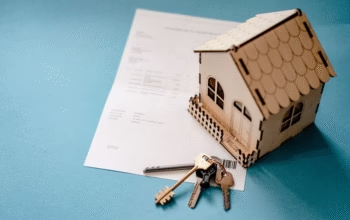How to Use Mortgage Refinance to Fund Your Dream Home Renovation
For many homeowners, the dream home already exists—it just needs a little (or a lot of) love. Maybe it’s a modern kitchen, a second bathroom, an outdoor entertaining space, or even a full-blown extension. But renovations cost money—often a lot more than expected. If you’re sitting on equity, refinancing your mortgage could be the key to unlocking the home you’ve always wanted.
In this post, we’ll walk you through how to strategically use a mortgage refinance to fund home renovations, avoid unnecessary debt traps, and even boost your property’s future value. Best of all, you don’t need to sell your home or dip into your savings to get started.
What Is Mortgage Refinancing?
Mortgage refinancing is the process of replacing your existing home loan with a new one—typically to secure a lower interest rate, extend or shorten the term, or access cash from your home equity.
When refinancing for a renovation, you’re usually tapping into your home’s built-up equity and converting it into accessible cash. This is known as a cash-out refinance.
Why Use a Mortgage Refinance for Renovations?
Renovations aren’t just about aesthetics—they’re about comfort, functionality, and value. Using a refinance to fund them can be one of the smartest ways to manage renovation costs if done correctly. Here’s why:
✅ Lower Interest Rates Than Credit Cards or Personal Loans
While personal loans may offer fast approval, they typically come with higher interest rates—often 8–15% or more. A refinanced mortgage typically offers significantly lower rates, especially if you’re refinancing a 30-year fixed loan or choosing a shorter term.
✅ Access to Large Sums of Money
If your home has appreciated in value since you bought it, you might have tens—or even hundreds—of thousands of dollars in equity. A refinance can give you access to that capital in one lump sum to fund large renovation projects.
✅ One Simple Monthly Payment
Instead of juggling multiple loans or credit cards, refinancing lets you consolidate your renovation costs into your primary mortgage. This simplifies your finances and can reduce monthly stress.
Step-by-Step Guide to Using Mortgage Refinancing for Renovations
Let’s break down exactly how to approach this process smartly.
Step 1: Determine Your Renovation Budget
Before you talk to a lender, get clear on how much you need. Speak with contractors, get quotes, and price out materials. Whether you’re building a new deck or adding a second floor, the scope and cost need to be realistic.
💡 Pro Tip: Add a 10–15% cushion for unexpected costs. Renovation budgets often go over.
Step 2: Understand Your Equity Position
Your ability to refinance and pull out cash depends on your equity. Most lenders allow you to borrow up to 80% of your home’s value.
Example:
- Home value: $400,000
- Current mortgage balance: $250,000
- Max refinance amount (80% of $400k): $320,000
- Available cash-out: $70,000 ($320k – $250k)
If you have enough equity, you may be able to cover your entire renovation with no other financing needed.
Step 3: Shop Around for Refinance Rates
Every lender offers different refinance terms. Compare multiple lenders and look closely at:
- Interest rates
- Closing costs
- Loan terms
- Prepayment penalties
🔍 Tip: Use online calculators to model your new mortgage payment. Ensure the cash you receive is worth the long-term cost of the refinance.
Step 4: Decide Between Cash-Out Refi vs. Renovation Loan
While a cash-out refinance is the most common route, consider if a renovation loan (like the FHA 203(k) or Fannie Mae’s HomeStyle loan) might be better. These loans allow you to borrow based on your home’s future value after renovations.
This means you may be able to access more funds than with a traditional cash-out refi.
Step 5: Apply and Use Funds Strategically
Once you refinance, the lump-sum funds are typically deposited into your account. This is when it’s easy to go overboard. Stick to your budget and prioritize renovations that add the most value.
High-ROI Renovation Ideas:
- Kitchen remodels
- Additional bathrooms
- Energy-efficient upgrades (solar panels, insulation)
- Adding square footage
- Curb appeal improvements (landscaping, siding, roofing)
Mistakes to Avoid
While refinancing for renovations can be powerful, it comes with risks if not approached wisely. Avoid these common pitfalls:
❌ Over-Borrowing
Just because you can borrow $100,000 doesn’t mean you should. Focus on renovations that have a strong return on investment or improve your quality of life.
❌ Not Considering Closing Costs
Refinancing isn’t free. Costs can range from 2–5% of the loan amount. Factor this into your total budget.
❌ Extending Your Loan Term Unnecessarily
A lower monthly payment might feel nice short-term, but if you refinance into a new 30-year mortgage, you may pay much more in interest over time—especially if you’re 10 years into your current loan.
Is Refinancing Right for You?
Here’s a quick checklist to help you decide:
✅ Your home has significantly appreciated in value
✅ You’ve built at least 20% equity
✅ Your credit score qualifies you for favorable refinance rates
✅ You plan to stay in your home for 5+ more years
✅ Your renovations will improve both livability and resale value
✅ You can cover the refinance closing costs
If you ticked most of these boxes, a refinance may be your best renovation funding option.
Success Story: How One Couple Built Their Dream Kitchen Without Selling Their Home
Meet Dave and Lisa. They bought their three-bedroom home in 2017 for $260,000. By 2025, it had appreciated to $400,000 thanks to a booming housing market and neighborhood development.
They’d dreamed of a gourmet kitchen, but saving $70,000 felt impossible. Rather than taking out high-interest personal loans or moving to a more expensive property, they refinanced their mortgage, pulling $80,000 in equity.
They used $65,000 for renovations, paid off a small credit card, and put the rest into an emergency fund. Today, their home is worth over $500,000, and their kitchen is the talk of the block.
Final Thoughts: A Dream Home Might Be Hiding in Plain Sight
You don’t have to move to find your dream home. Often, it’s the one you’re already living in—just waiting for the right investment. Mortgage refinancing can be the bridge between your current space and your ideal living environment.
But remember: this isn’t free money. It’s a calculated financial strategy that requires planning, discipline, and a long-term perspective. When done right, it can change your everyday quality of life and your financial future.
Call to Action: Ready to Build Your Dream Home?
If you’re sitting on home equity, now might be the perfect time to refinance and make your renovation dreams a reality. Speak to a mortgage broker, get multiple quotes, and start designing the home you’ve always imagined—without packing a single box.
Need help navigating your refinance journey?
Check out our free refinancing calculator or connect with vetted lenders today at YourFinanceRates1.com.



